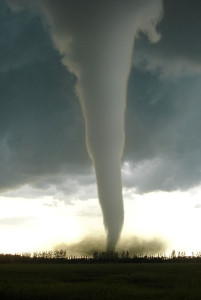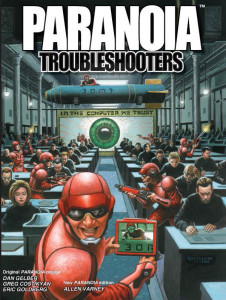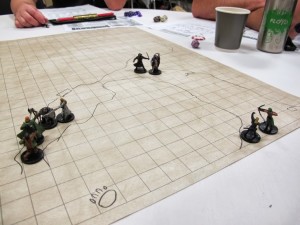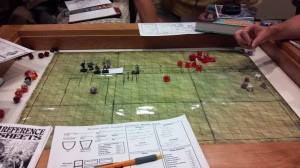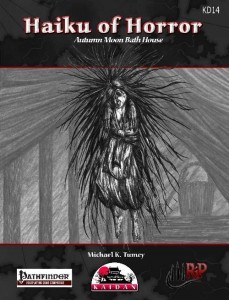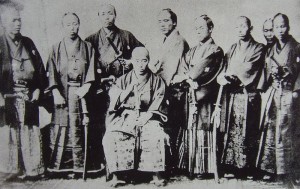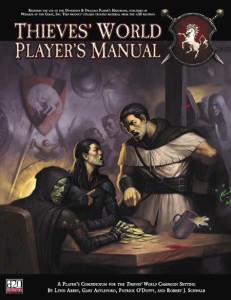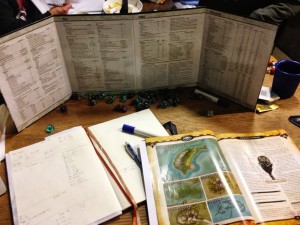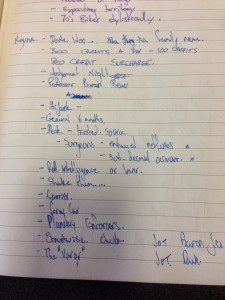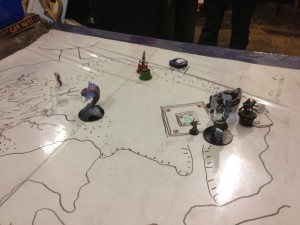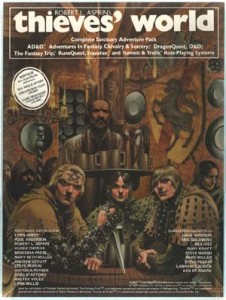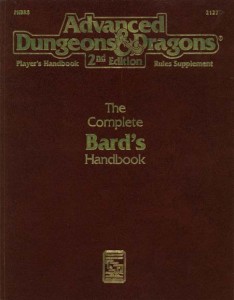My home state of Colorado is currently on fire, which has me thinking about using natural disasters in campaigns. (Yes, I’m struck by the irony that my house is 6 miles away from the site of the Black Forest fire and I’m sitting here pondering how to use that in a game…) Though I’ve played through at least one module (Second Darkness from Paizo) that involved a tsunami of some variety and read a Kaidan adventure that involved a blizzard (Frozen Wind from Rite Publishing), I’ve not really seen many adventures that use them. Wonder why?
Natural disasters offer some interesting hooks GMs and designers could leverage in a variety of ways. They might encounter people fleeing the site of a crisis. Perhaps there are first responders (knights, clergy, mages, etc) charging to face the crisis head on. It might be as simple as a royal decree declaring some area off limits due to a crisis.
And though these may be created by Mother Nature herself, nothing says they couldn’t be created by some deity or wizard or elemental force blowing off steam. The God of the Sea might have been offended by a king and choose to wipe away some city or town along the coast out of spite. Or two wizards may battle it out and destroy the environment in an area to the point where tragic drought drives people from their homes in droves. Maybe a rift between the planes allowed a chaotic elemental force into the world and it’s on a rampage…
The possibilities are truly endless. And as we see in our own world, disasters seem to occur regularly on scales both big and small.
Natural disasters might include things like tsunamis, hurricanes, water spouts, or floods; blizzards or hard freezes; volcanic eruptions, lightning-sparked fires and droughts; thunder storms or tornadoes. And if that’s not enough, you can also add at least two of the classic biblical plagues – disease or pestilence – to the mix. Plus, there are always the man-made variety of disasters such as genocide, slash and burn, arson, war, mass poisoning, acts of terrorism, and so on…
Here are ten different ways you can think about working a disaster into your game. The party…:
- …passes a group of people on the road fleeing the site of a recent disaster.
- …overhears some people talking about a recent disaster in a crowd or tavern.
- …is passed on the road by a small group of heroes heading to the site of a recent disaster to help.
- …hears a town crier announcing that the area of a recent disaster is now off limits by royal decree.
- …notices a sudden evacuation of wildlife escaping a local disaster.
- …comes across the site of destruction from a recent (or ancient) disaster.
- …feels the impact of a nearby disaster while traveling (local tremors, strong winds, torrential rain, etc.).
- …runs into a staging area where people have gathered to treat the wounded after a local disaster.
- …can see the effects of a nearby disaster at a distance (smoke, volcanic eruption, storm clouds, etc.).
- …is stopped on the road by local authorities preventing them from entering an area affected by disaster.
For some reading on ancient disasters, here are a few articles:
- 8 Natural Disasters of Ancient Times at Listverse by Shelly Barclay
- Wikipedia has several articles on Ancient Health Disasters and Ancient Natural Disasters
- About.com has a collection of articles on Ancient Natural Disasters
- Erik Sass @ Mental Floss has a list of 11 Natural Disasters that Led to Wars
- Ben Conoley @ ModernMan.com has a list of Ancient Cities Wiped Out By Disasters
We don’t lack for disasters to use in our campaigns, only the reasons and will to use them!
(Please keep a good thought for the people affected by the fires in Colorado and disasters elsewhere this summer. It’s going to be another rough season I’m afraid.)
Brian “Fitz” Fitzpatrick is a Software Engineer who manages (or is that mangles) Game Knight Reviews and tinkers with writing game materials via his Moebius Adventures imprint. When he’s not writing about gaming, he’s actually gaming or at least thinking about gaming in some capacity. During the non-writing, non-gaming time he’s likely trying to keep up with his wife and two daughters or wrangling code for a living!

